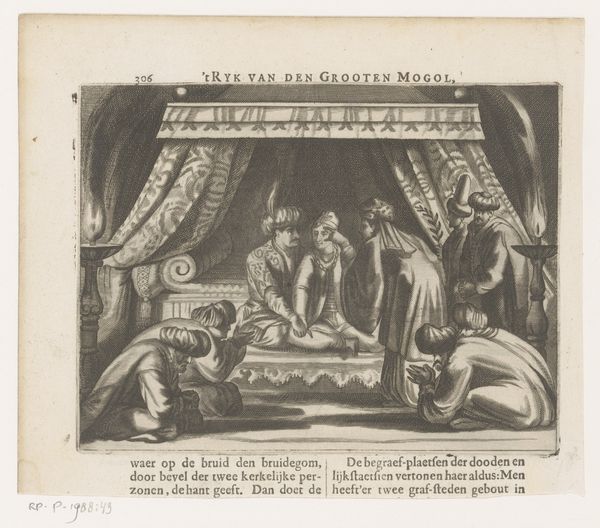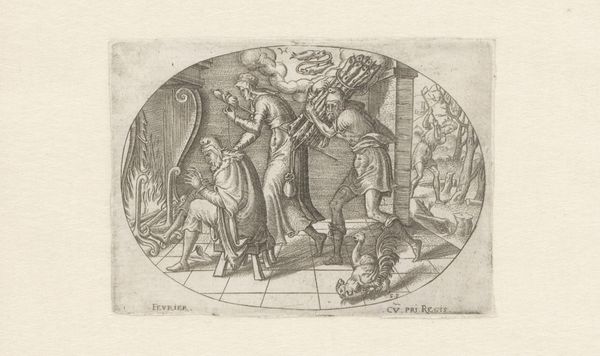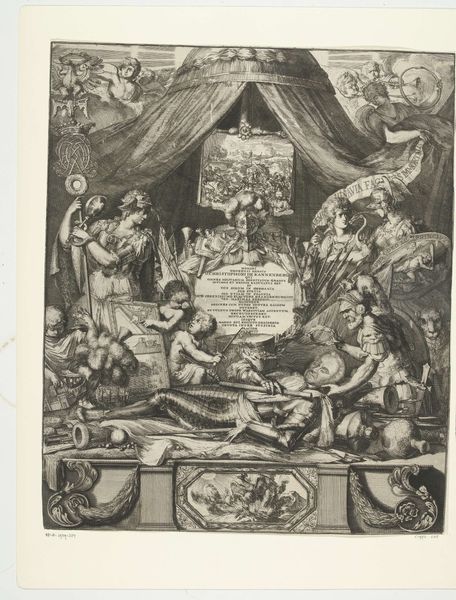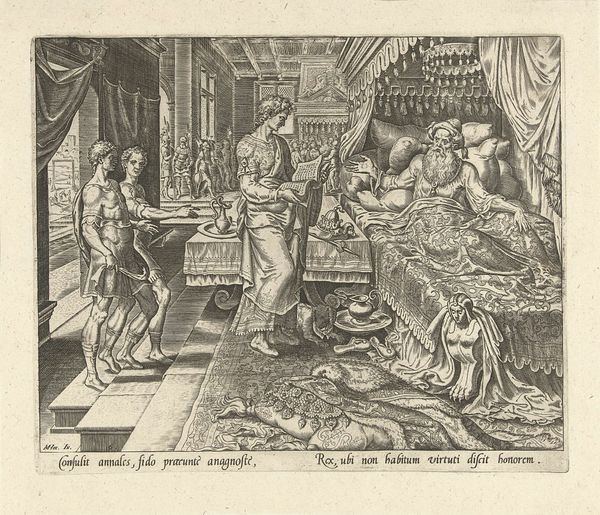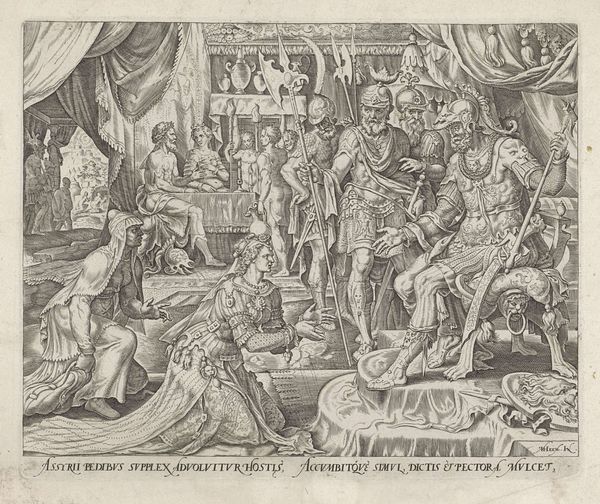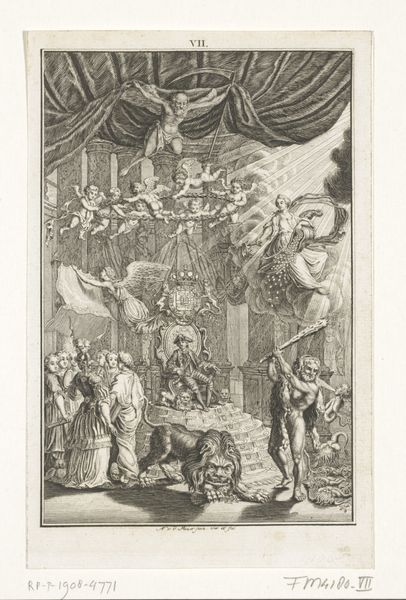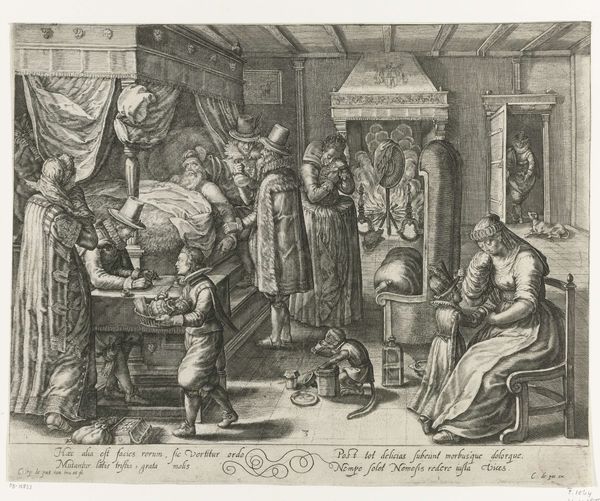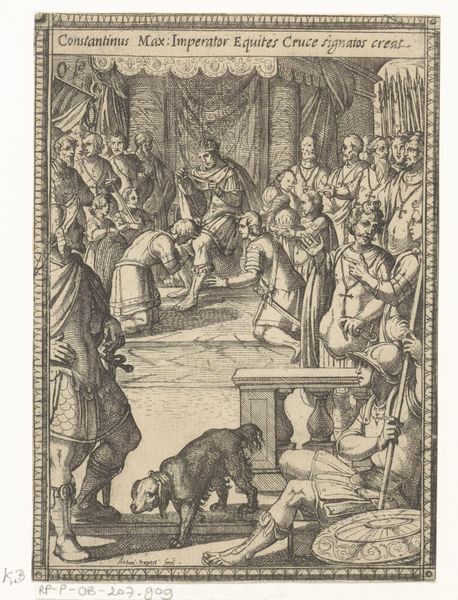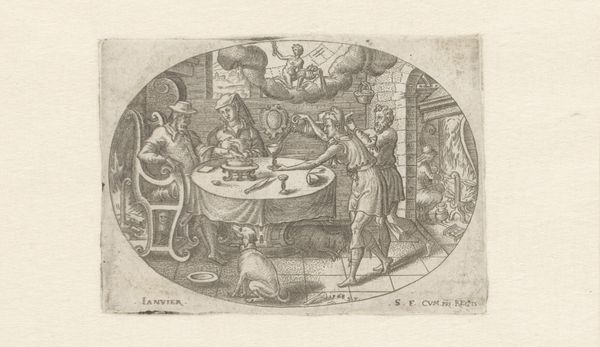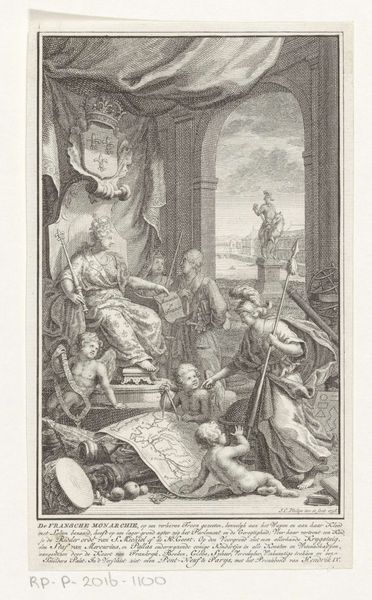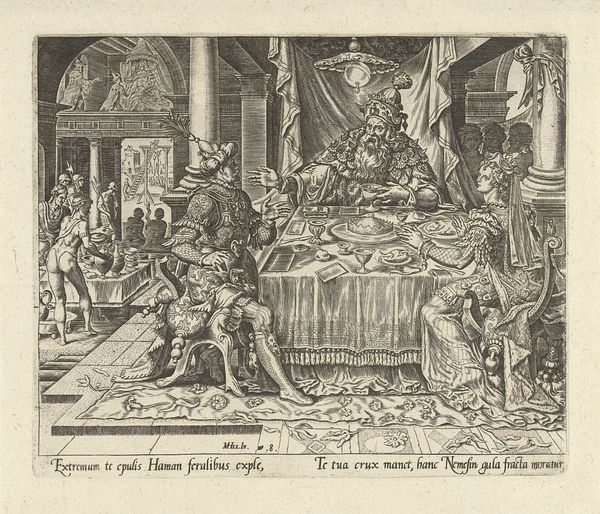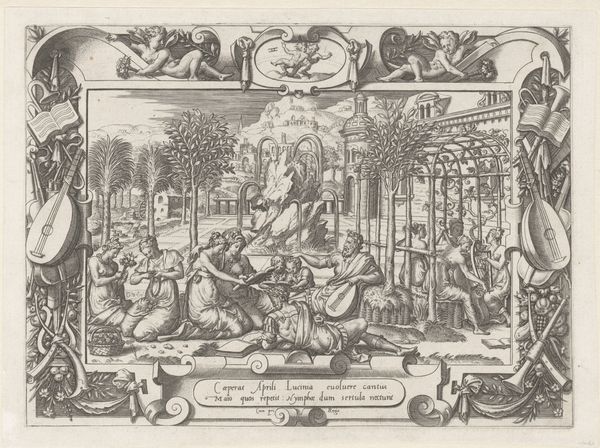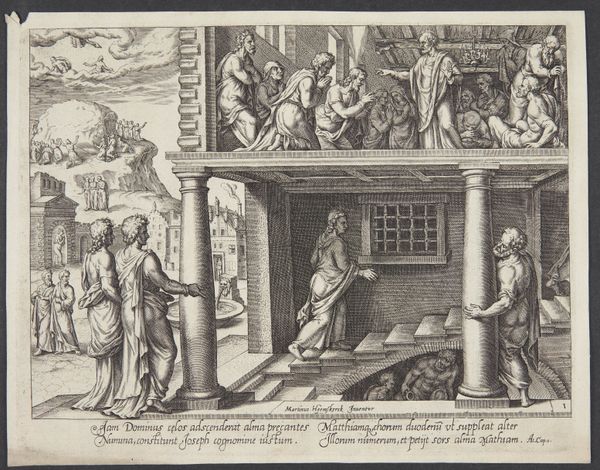
#
comic strip sketch
#
mechanical pen drawing
#
pen illustration
#
old engraving style
#
junji ito style
#
personal sketchbook
#
illustrative and welcoming imagery
#
pen-ink sketch
#
pen work
#
storyboard and sketchbook work
Dimensions: height 105 mm, width 131 mm
Copyright: Rijks Museum: Open Domain
Editor: This is "Vorst in discussie met toehoorders" by Albert Vogel, created sometime between 1824 and 1886. It looks like a pen and ink drawing depicting a theatrical scene. It has this fascinating ornate border, but the mood inside the scene itself seems rather serious. What do you see in this piece, with its blend of high drama and whimsical decoration? Curator: I’m immediately drawn to the visual vocabulary. Note how the border, teeming with cherubs and classical motifs, frames a seemingly tense interior scene. This juxtaposition isn't accidental. How does the external ornamentation affect your perception of the inner narrative? Editor: It makes me think about artifice versus reality. The outside is so fanciful, almost comical, but the inside feels much heavier, with what looks like an interrogation taking place. Curator: Precisely. The artist utilizes familiar symbols—the crown, the theatrical gestures—to speak to broader themes of power, judgment, and the very performativity of justice. Think about how those figures surrounding the king become active carriers of a communal psychological space, mirroring collective doubts. Editor: I didn't notice the almost dreamlike figures on the borders! Do you think the artist used them to signal a particular interpretation, maybe suggesting that this power struggle is taking place in the human mind? Curator: Absolutely! These additional details—a crumbling facade behind the king, the positioning of a character seated to his left as a reflection —hint to the overall tension between outer presentation and inner truth. Consider how these symbols might have resonated with audiences of that time period. Editor: This has really opened my eyes to seeing how images use recognizable components, or iconography, to make people understand larger points. Thanks for sharing these views! Curator: My pleasure. It's through interpreting and deciphering symbolic narratives like this one, that we truly learn to appreciate and understand artworks on a deeper cultural level.
Comments
No comments
Be the first to comment and join the conversation on the ultimate creative platform.
